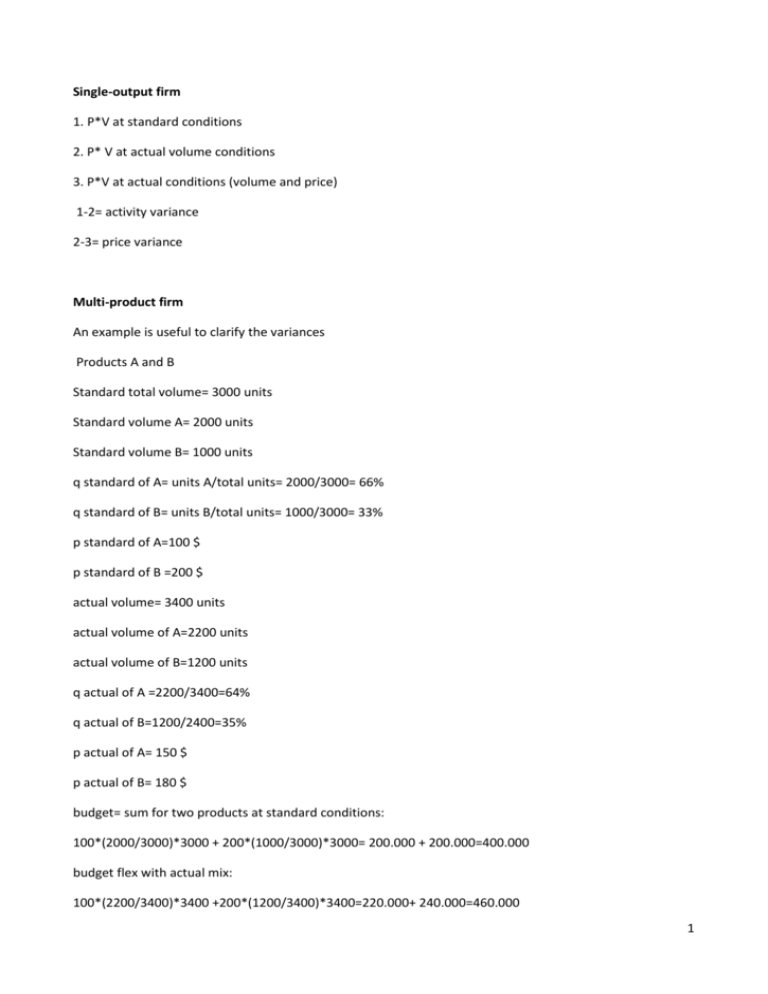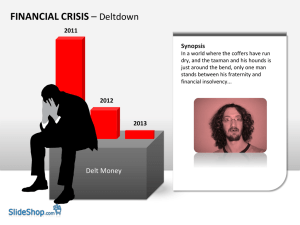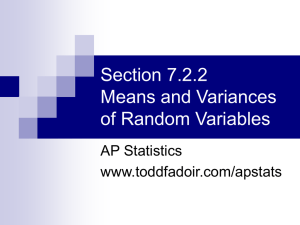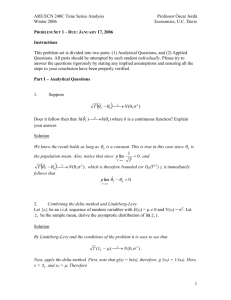Single-output firm 1. P*V at standard conditions 2. P* V at actual
advertisement

Single-output firm 1. P*V at standard conditions 2. P* V at actual volume conditions 3. P*V at actual conditions (volume and price) 1-2= activity variance 2-3= price variance Multi-product firm An example is useful to clarify the variances Products A and B Standard total volume= 3000 units Standard volume A= 2000 units Standard volume B= 1000 units q standard of A= units A/total units= 2000/3000= 66% q standard of B= units B/total units= 1000/3000= 33% p standard of A=100 $ p standard of B =200 $ actual volume= 3400 units actual volume of A=2200 units actual volume of B=1200 units q actual of A =2200/3400=64% q actual of B=1200/2400=35% p actual of A= 150 $ p actual of B= 180 $ budget= sum for two products at standard conditions: 100*(2000/3000)*3000 + 200*(1000/3000)*3000= 200.000 + 200.000=400.000 budget flex with actual mix: 100*(2200/3400)*3400 +200*(1200/3400)*3400=220.000+ 240.000=460.000 1 Actual: 150 *(2200/3400)*3400 + 180*(1200/3400)*3400=330.000 + 216.000= 546.000 Activity variance= 460.000-400.000=60.000 fav in total and for both the products (20.000 and 40.000 respectively) Price variance= 546000-460.000=86.000 fav (110.000 fav for A; -24.000 unfav for B) Variance of volume can be better investigated by separating: 1. variance of volume stricto sensu: change the total volume in actual, but q is standard (i.e. mix standard). Firm is selling more by maintaining the same proportion in terms of products, A and B. 100*(2000/3000)*3400 + 200*(1000/3000)*3400=226.666 + 226.666=453.333 2. mix variance: change the mix, from standard to actual Thus we can understand that total activity variance (60.000) is composed of: 1. Activity variance stricto sensu is 453.333-400.000=53.333 fav (for both A and B) 2. Mix variance 460.000 – 453.333=6.666 fav in total but unfav for A (220.000 – 226.666) and fav for B (240.000 – 226.666). Company actually sells more, but in particular more product B (higher price even if actual price is lower than planned) . Mix variance is favorable because firm sells a higher proportion of the most expensive B. Also A is sold in a higher absolute quantity (from 2000 to 2200 but in lower proportion): activity variance stricto sensu would be 26.000, “corrected “ by a negative mix variance of about 6.000 for a total equal to 20.000; if company should maintain the same proportion of sales (mix standard) it would sell (2000/3000)*3400= 2266 units of A (and not 2200) and (1000/3000)*3400=1133 of B (and not 1200). B is sold in a higher absolute quantity (from 1000 to 1200) and in a higher proportion: activity variance would be 26.000 + a positive mix variance of about 14.000 for a total equal to 40.000. Try to solve Merlino case…. 2








